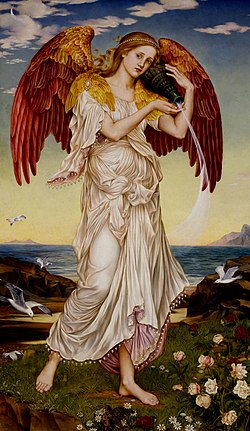
Eos is an 1895 painting by the English artist Evelyn De Morgan. [1] [2] done in a Pre-Raphaelite style. It depicts the Greek goddess Eos, goddess of the dawn and of love, standing on a seashore, surrounded by birds and flowers and pouring water from a jug.
Eos is in the Columbia Museum of Art, Columbia, South Carolina. [3]